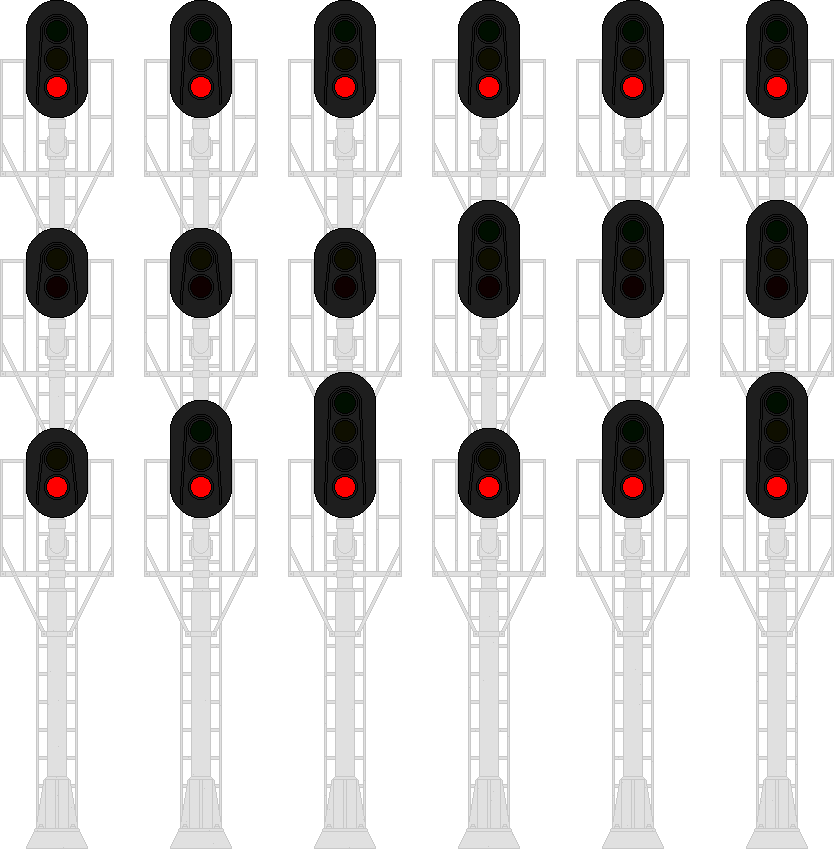While R/*Y* and R/*Y*/R might have the same meaning depending on what railroad you are talking about there is a big difference on how it perceived on railroads.
 |
| Two headed aspect is Ex-Southern and Conrail while the three headed is Ex-Southern and Norfolk&Western |

In Canada (CROR) R/*Y* is Slow to Stop & R/*Y*/R is Limited to Stop here in the United States on the western railroads R/*Y* & R/*Y*/R is Diverging Approach Medium or Diverging Advance Approach depending on the railroad while the eastern railroad's they have it differently. R/*Y* & R/*Y*/R on NS's Ex-SOU line it's Diverging Approach Restricted while R/*Y*/R on Ex-NW lines is Diverging Approach Diverging. On the Ex-CR line's (Both CSX & NS) there is no R/*Y*/R but there is a R/*Y* which is used as Medium Approach. CSX uses R/*Y* & R/*Y*/R as Limited Approach where as NORAC uses R/*Y* for Medium Approach and as of 2018 R/*Y*/R is now Limited Approach. So many names just for Red over Flashing Yellow (/Red)! Now the reasoning for the R/*Y* on Conrail, NORAC and the CROR is simple on their territory Restricting is marked R/Y.









































